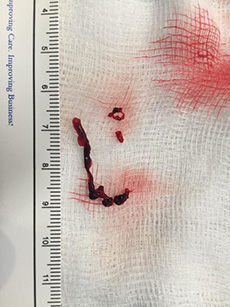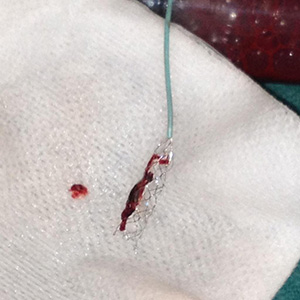Acute ischaemic stroke (AIS) refers to sudden blockage of a major brain artery, usually as a result of migration of clot from the heart or neck into the brain along the direction of flow in the vessels. As the arteries get smaller as they enter the brain, the clot lodges at a point where it is larger than the vessel diameter. This causes slowing or complete interruption of blood flow to the brain, which in turn becomes deprived of oxygen. If untreated, this can result in permanent brain damage within minutes to hours.
In 2015, multiple clinical trials proved that removal of clot from the artery by endovascular techniques is the best available treatment for AIS. However, for the treatment to be successful, it is essential for the patient suffering from stroke to be transferred to hospital as quickly as possible, since the benefit for treatment falls after 6 hours post onset of symptoms.
How do I know if someone is having a stroke?
There are several telltale signs of AIS in evolution. The commonest of these are:
- Sudden loss of movement on one side of the body or one limb
- Sudden drooping on one side of the face
- Eyes fixed looking to one side
- Inability to speak or to form or understand words
- Inability to see on one side of the body
- Eyes looking in different directions suddenly
- Sudden loss of balance or severe dizziness and vertigo
IF YOU THINK YOU OR SOMEONE YOU KNOW IS EXPERIENCING ONE OR MORE OF THESE SYMPTOMS, DO NOT WAIT – DIAL 000 AND ASK FOR AN AMBULANCE, STATING THAT THE PERSON MAY BE HAVING A STROKE
What does treatment of AIS involve?
When the patient arrives at hospital, they will be assessed by a team of doctors to determine if AIS is likely. If it is considered likely, a CT scan of the brain and blood vessels of the neck and head will be performed. If the CT scan confirms that there is a blocked blood vessel, there will be a discussion about the best form of treatment.
If the blockage has been present for less than 4.5 hours, most patients will be administered a clot-busting drug (Recombinant Tissue Plasminogen Activator – rt-PA) into the veins. If the CT shows that the blocked vessel is a large vessel, the patient will be referred for endovascular therapy, called Mechanical Thrombectomy (MT) or Endovascular Clot Retrieval (ECR).
ECR involves deep sedation or general anaesthesia, followed by access to the body’s arteries through the groin. After gaining access to the arteries, devices are navigated under x-ray into the blocked artery, and a basket-type device deployed into the clot and retrieved, pulling the clot with it.
 Clot after removal from brain artery |
 Clot attached to retrieval device after removal from body |
This is technically successful in 80-95% of cases, and most patients presenting to hospital within 6 hours of stroke onset with large clots will benefit from this procedure.
Where is ECR done?
There are only a few hospitals in Sydney that offer ECR for AIS. This is because the equipment required for the procedures is large and expensive, and the doctors who do these procedures must be highly trained and skilled
This SNIS team offer ECR for AIS at Prince of Wales Hospital, Liverpool Hospital and Macquarie University Hospital, and are available 24/7/365 for AIS patients. However, if you think you or someone you know is experiencing AIS symptoms, call an ambulance on 000 immediately – do NOT call SNIS or the above hospitals directly.
You will need the Adobe Reader to view and print these documents.![]()














